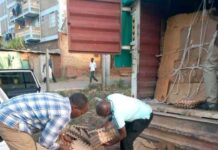By Peter Setou, Chief Executive, Vumelana Advisory Fund
The past year was a mixed bag for the land reform programme. While the claimant communities and South Africans in general were encouraged by an announcement by the President in his state of the nation address in February 2021 that a Land Reform and Development Agency will be created as part of land reform initiatives, as well as the mooted Land Claims Court which is pioneered by the Department of Justice and Constitutional Development, these green shoots were dampened by the snail pace by which government implements its programmes and the budgetary cuts.
The land reform programme is a government-led initiative that seeks to change the skewed land ownership patterns in South Africa and to redress the historical injustices of the past by restoring land to communities that were forcibly removed from their ancestral land. However, this critical pathway to redress inequalities of the past has been criticised for its lacklustre pace, which has been exacerbated by significant budgetary cuts following the COVID-19 outbreak and a weak economic environment.
The funding of R16.9 billion that was initially allocated to the Department of Agriculture, Land Reform and Rural Development in 2020 was slashed by R2.4 billion to R14.4 billion; the funds allocated for land redistribution and tenure reform were cut by R544 million while the budget for land restitution was reduced by R403 million.
As a result of these substantial budget cuts, the development support for land redistribution and tenure reform were scaled down.
These cuts were mitigated when the Finance Minister delivered the 2021 budget speech and announced an allocation of R16.9 billion for the 2021/2022 financial year to the Department of Agriculture Land Reform and Rural Development (DALRRD), with the Commission of Land Restitution receiving a budgetary allocation of R3.3 billion in the same year.
Owing to budgetary constraints, the DLRRD was compelled to scale down applications relating to land support during the 2021/2022 financial year. The DALRRD announced that new land acquisition projects would not be considered in the 2020/2021 financial year, nor would new valuations be conducted on land being considered for acquisition.
Despite the budgetary cuts, the land reform programme was somewhat buoyed by some positive news on the economic front, with Statistics South Africa stating that the economy was recording signs of recovery in the second quarter of 2021. This came on the heels of a revised 1% increase in the country’s real gross domestic product (GDP) in the first quarter (January-March 2021). Despite these gains over the last four quarters, the economy contracted by 14.4% compared with the pre-COVID-19 period.
However, these findings do not reflect the economic impact of the unrest and violence that engulfed Gauteng and KwaZulu-Natal in July 2021. South Africa’s GDP fell by 1.5% in the third quarter of 2021 as a result of lockdowns, protests and looting.
The agriculture industry was the hardest hit by the civil unrest in July, recording its largest drop in output since 2016, contracting by 13.6%.
On a positive note, an encouraging development has been the announcement by President Cyril Ramaphosa of the establishment of a Land Reform and Agricultural Development Agency to accelerate land reform by removing it from political and bureaucratic control. Ideally, the agency will facilitate national coordination, reduce red tape, and serve as a one-stop shop for issues relating to decentralised agricultural land redistribution.
President Ramaphosa said the agency would not require any additional budgetary allocation but would instead rely on existing sources of material and other forms of assistance from the commercial agricultural sector. Whilst its difficult to imagine how this agency will function effectively without additional funding, this development should be welcomed. The devil as the saying goes will be on the details regarding how this Agency will be shaped and who will form part of it.
The idea of the agency was developed from proposals on decentralising land reform first set out in South Africa’s National Development Plan (NDP) released in 2012. These ideas were subsequently echoed in 2019 by the Presidential Advisory Panel on Land Reform and Agriculture.
Another notable development that took place this year was the promulgation of the new Land Court Bill, which is tasked with addressing the slow processing of land claims.
The Bill seeks to give effect to the recommendations of the 2019 report by the Presidential Advisory Panel on Land Reform and Agriculture on the establishment of two new courts, a Land Court and a Land Court of Appeal. The creation of these specialised and permanent courts would, according to the Advisory Panel Report and the Bill Memorandum, also aid in the development of case law on land restitution and land rights.
A significant development last year was the introduction of the Land Expropriation Bill after considering all public comments. The introduction of the Expropriation Bill should not be confused with the proposed amendments to section 25 of the Constitution. Section 25 (4)(b) refers to the expropriation of both moveable and immovable property. The amendment to section 25 of the Constitution seeks to allow expropriation without compensation, whereas the Expropriation Bill outlines how expropriation must be carried out and provides guidance on the processes and procedures for the expropriation of property by state organs.
The Bill has now been referred to the National Assembly for consideration and approval, as well as for any necessary amendments. It will then be sent to the National Council of Provinces for further discussion before being sent to the President for approval. Once this is completed, an effective date will be provided.
More recently the ruling party could not garner the two-thirds of the votes required to amend section 25 of the Constitution to pave the way for land expropriation without compensation.
As an organisation that has worked with land reform claimants, we understand the emotive nature of land ownership and the frustration that many communities feel about the slow pace of land reform. However, we are of the view that remedial action lies not in tinkering with the Constitution, but in addressing the bottlenecks that continue to impede successful land reform.
The land reform programme has been beset by myriad challenges, which have been echoed by the findings of the High-Level Panel Report as well as the Presidential Advisory Panel on Land Reform report.
Barriers included prohibitively exorbitant asking prices for land in some instances; a lack of political will; corrupt bureaucrats and officials; inept communal property associations; infighting within claimant communities; insufficient funding to support land reform claimants and lack of access to finance; lack of capacity by the state and poor coordination, uncertainty about what land reform should achieve and the results can be measured, and lack of post-settlement support. These are the challenges that government should focus on addressing as a matter of urgency.
Although budgetary cuts have contributed to slowing down the pace of the land reform programme, Vumelana Advisory Fund believes that the positive developments in the legislative and judiciary space bodes well for land reform. We remain confident that these interventions once implemented will go a long way to addressing the skewed land ownership and will renew hope for thousands of communities who are yet to receive any form of social justice for the ancestral land that was forcibly taken away from them.
As the year draws to an end and we look forward to the new year, there is no doubt that there will be a need for other interventions to support government in driving the land reform programme. We must all come together to design and implement such solutions. The road ahead does not seem any easier than where we are coming from, but if we look forward with a focused mindset, and determination to implement change driven by all relevant stakeholders in the private and public sectors, we just might be able to tackle this challenge better than we have done in the last 27 years.










I would appreciate to get more information regarding the land and other farming businesses
Comments are closed.